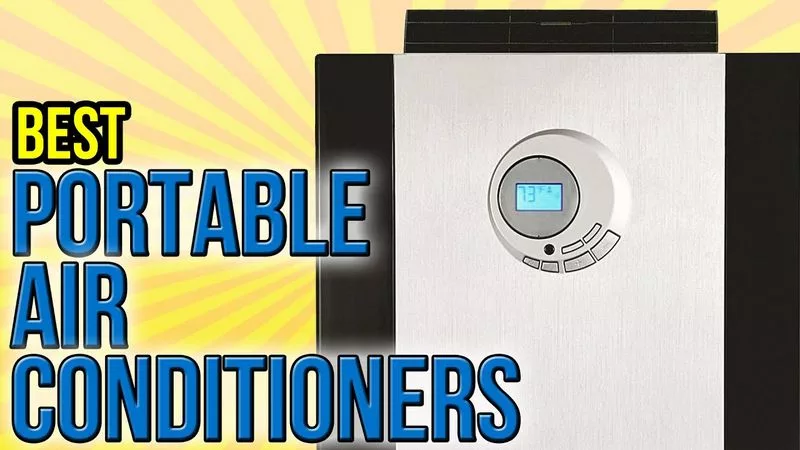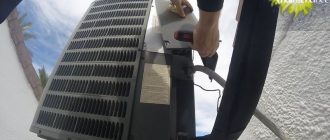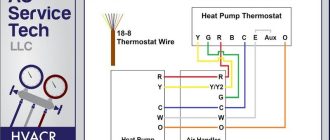
Venting Solutions for Portable Air Conditioners: Best Practices and Tips
When it comes to beating the summer heat, portable air conditioners are a popular choice for their convenience and efficiency. These compact units can cool down any room quickly, providing relief from the scorching temperatures. However, it’s important to properly vent your portable air conditioner to ensure optimal performance and avoid any potential issues.
One of the best tips for venting your portable air conditioner is to use a window kit. This kit typically includes an adjustable panel that fits into your window, allowing the hot air from the air conditioner to escape outside. By properly sealing the window kit, you can prevent hot air from coming back into the room, ensuring that your portable air conditioner works efficiently and effectively.
Another solution to consider is using a sliding glass door kit for venting your portable air conditioner. This kit is perfect for rooms without windows or for those who don’t want to obstruct their view. It allows you to install the adjustable panel in your sliding glass door, providing a secure and efficient venting solution without any permanent modifications to your space.
It’s also important to regularly clean and maintain your portable air conditioner’s vent. Over time, the vent can accumulate dust and debris, which can obstruct airflow and reduce the unit’s performance. By regularly cleaning the vent and removing any obstructions, you can ensure that your portable air conditioner works at its best and provides optimal cooling.
In conclusion, following these best practices and tips for venting your portable air conditioner can make all the difference in its performance. From using a window kit or a sliding glass door kit to regularly cleaning the vent, these simple solutions can help you get the most out of your portable air conditioner and stay cool during the hot summer months.
The Importance of Proper Venting
When it comes to portable air conditioners, proper venting is essential for optimal performance. Without proper venting, the best portable air conditioners can become less effective and even cause potential health issues.
Air conditioners work by cooling the air and removing moisture from the environment. However, if the hot air that is produced during the cooling process is not properly vented, it can quickly build up and impact the efficiency of the air conditioner.
Proper venting allows the hot air to be removed from the room, ensuring that the air conditioner can continue to cool the space effectively. This is why it is important to follow the recommended venting solutions for portable air conditioners.
One of the best tips for venting a portable air conditioner is to use a window venting kit. This kit typically includes a window adaptor, a hose, and a window kit. The window adaptor is placed in the window, allowing the hose to vent the hot air outside while preventing warm air from entering the room. This is a simple and effective solution for venting a portable air conditioner.
Another option is to use a drop ceiling vent kit. This solution is ideal for rooms with drop ceilings where it may not be possible to vent the hot air through a window. The drop ceiling vent kit allows the hot air to be vented into the ceiling space, preventing it from building up in the room.
In addition to using the right venting solutions, it is also important to properly maintain the venting system. Regularly check the vent hose for any blockages or damage, and ensure that it is securely connected to both the air conditioner and the venting kit.
| 1. Follow the manufacturer’s instructions for venting the air conditioner. |
| 2. Use a window venting kit or a drop ceiling vent kit for optimal venting. |
| 3. Regularly check the vent hose for any blockages or damage. |
| 4. Ensure that the vent hose is securely connected to the air conditioner and the venting kit. |
By following these tips and using the best venting solutions, you can ensure that your portable air conditioner operates at its highest efficiency, providing you with cool and comfortable air.
Understanding Portable Air Conditioner Venting Systems
When it comes to portable air conditioners, proper venting is key to maximizing their cooling efficiency. Venting allows the hot air generated by the air conditioner to be expelled from the room, while also allowing fresh air to be drawn in. Understanding how venting systems work and following best practices can help you make the most of your portable air conditioner.
There are two main types of venting systems for portable air conditioners: single-hose and dual-hose. Single-hose systems use a single hose to both expel hot air and draw in fresh air. This can result in some of the cooled air being pulled out of the room, which can reduce the overall cooling efficiency of the unit.
Dual-hose systems, on the other hand, use two hoses: one for expelling hot air and the other for drawing in fresh air. This allows for a more efficient cooling process, as no cooled air is being pulled out of the room. However, dual-hose systems can be slightly more complex to set up and may require more space.
When venting a portable air conditioner, it’s important to ensure that the hoses are properly attached and sealed to prevent any air leaks. This can be done using duct tape or specially-designed venting kits. Additionally, it’s a good practice to position the exhaust hose as close to a window or another opening as possible to ensure optimal airflow.
Another best practice is to minimize the length of the exhaust hose, as longer hoses can decrease the efficiency of the air conditioner. If necessary, you can use a hose extension kit to increase the length, but keep in mind that this may result in some loss of cooling efficiency.
Lastly, it’s important to regularly clean and maintain the venting system to prevent any obstructions that could impede airflow. Check the hoses for any blockages or debris, and clean or replace the filters as needed. This will help ensure that your portable air conditioner continues to operate at its best.
By understanding the different types of venting systems and following these best practices, you can optimize the cooling efficiency of your portable air conditioner and create a comfortable indoor environment during those hot summer months.
Types of Venting Kits
When it comes to venting a portable air conditioner, there are a few options available. The type of venting kit you choose will depend on your specific needs and the layout of your space. Here are some common types of venting kits to consider:
1. Window Venting Kit: This is the most popular and easiest option for venting a portable air conditioner. It includes a window adapter that fits into standard windows and allows the hot air to be exhausted outside while keeping the cool air inside. Make sure to properly seal any gaps around the window to prevent air leaks.
2. Sliding Door Venting Kit: If you have a sliding glass door, this venting kit is a great alternative to the window kit. It includes a sliding door adapter that allows the exhaust hose to be attached to the door while still allowing it to slide open and close.
3. Drop Ceiling Venting Kit: If you have a drop ceiling, this venting kit is a convenient option. It includes a ceiling panel that fits into a standard drop ceiling grid and allows the hot air to be vented into the space above the ceiling. This is a good choice if you don’t have windows or sliding doors available for venting.
4. Wall Venting Kit: If you prefer to vent the hot air through a wall instead of a window, a wall venting kit is the solution. It includes a wall adapter that allows the exhaust hose to be attached to a small opening in the wall. This option is ideal for rooms without windows or if you don’t want to obstruct your view.
Remember to always follow the manufacturer’s instructions for installing and using venting kits. These kits are designed to provide the best venting solution for portable air conditioners and ensure optimal performance.
Choosing the Right Venting Kit
When it comes to finding the best solutions for venting portable air conditioners, it is important to choose the right venting kit. A proper venting kit will ensure that your portable air conditioner functions optimally and efficiently.
Here are some tips and best practices for choosing the right venting kit for your portable air conditioner:
| Tip | Description |
|---|---|
| 1 | Check the size of the exhaust hose. |
| 2 | Ensure compatibility with your portable air conditioner model. |
| 3 | Consider the length of the venting kit. |
| 4 | Look for a kit with a window adapter. |
| 5 | Opt for a kit with a flexible hose for easy installation. |
By following these tips and best practices, you can choose the right venting kit for your portable air conditioner and ensure that it operates efficiently and effectively.
Installation Steps for Venting Kits
Proper installation of a venting kit is essential for ensuring the best performance of portable air conditioners. These kits provide convenient solutions for venting the hot air generated by the air conditioner, allowing it to cool the room effectively.
Here are some recommended installation practices for venting kits:
1. Choose the Right Location:
Find the best spot in the room to install the venting kit. Ideally, it should be near a window or another opening to allow easy access for venting the hot air.
2. Prepare the Window Opening:
Carefully measure and cut a hole in the window panel to accommodate the vent hose. Ensure that the size of the hole matches the hose diameter for a proper fit.
3. Attach the Window Panel:
Securely attach the window panel to the window frame, ensuring a tight seal. This will prevent any hot air from entering the room or cold air from escaping.
4. Connect the Vent Hose:
Connect one end of the vent hose to the back of the portable air conditioner unit. Make sure it is securely attached to prevent any leaks or air leakage.
5. Extend the Vent Hose:
Extend the vent hose from the air conditioner unit to the window opening or designated venting location. Avoid kinks or bends in the hose, as this can restrict airflow and reduce the cooling efficiency.
6. Secure the Vent Hose:
Use the provided clamps or tape to securely attach the vent hose to the window panel or venting location. This will prevent any air leakage and ensure optimal performance.
Following these best practices for installing a venting kit will help to maximize the cooling efficiency of portable air conditioners. It is important to regularly maintain and clean the venting system to ensure proper airflow and prevent any obstructions.
Note: Always refer to the manufacturer’s instructions for specific guidelines on installing venting kits for your particular portable air conditioner model.
Common Venting Issues and How to Solve Them
When it comes to venting portable air conditioners, there are a few common issues that arise. Fortunately, there are solutions and tips to help you overcome these challenges and ensure the best possible performance from your portable air conditioner. Here are some of the most common venting issues and how to solve them:
- Improper positioning of the vent hose: One of the most common venting issues is improperly positioning the vent hose. It is important to ensure that the hose is properly connected and sealed to the air conditioner unit and that it is free from any kinks or bends. Additionally, it is important to position the vent hose to allow for efficient airflow and to avoid obstructing the exhaust or intake vents.
- Inadequate ventilation: Another common venting issue is inadequate ventilation around the portable air conditioner. It is important to ensure that there is enough space around the unit for proper air circulation. If the unit is placed in a small, enclosed space, the lack of ventilation can restrict the airflow and reduce the efficiency of the air conditioner. To solve this issue, try to place the unit in a room with sufficient space and consider using a ventilation fan to improve air circulation.
- Incorrect installation of window vent kit: Many portable air conditioners come with a window vent kit that allows you to vent the hot air out through a window. However, incorrect installation of the window vent kit can lead to air leaks and poor performance. To solve this issue, carefully follow the manufacturer’s instructions for installing the window vent kit and ensure that all parts are properly connected and sealed.
- Using an extendable vent hose: Some portable air conditioner users try to extend the length of the vent hose to reach a further window or vent. However, using an extendable vent hose can negatively affect the performance of the air conditioner and cause increased energy consumption. Instead, it is recommended to use the vent hose at its original length or consider using a vent hose extender specifically designed for your portable air conditioner model.
- Neglecting regular maintenance: Neglecting regular maintenance of your portable air conditioner can also lead to venting issues. It is important to regularly clean and replace the air filter, as a dirty or clogged filter can restrict airflow and reduce cooling efficiency. Additionally, make sure to check the vent hose for any obstructions or blockages and clean it if necessary.
By being aware of these common venting issues and implementing the suggested solutions and tips, you can ensure the best possible venting performance from your portable air conditioner. Remember to always refer to the manufacturer’s instructions and guidelines for specific troubleshooting steps and maintenance recommendations.
Tips for Maximizing Venting Efficiency
When it comes to venting your portable air conditioner, following the best practices can help you maximize its efficiency. Here are some useful tips:
- Choose the right type of venting solution for your portable air conditioner. There are two main options – a window kit or a drop ceiling kit. Assess your needs and decide which one will work best for your space.
- Ensure a tight seal between the venting kit and the window or drop ceiling. Any gaps or leaks can result in air leakage and decrease the efficiency of your air conditioner.
- Keep the venting path as short and straight as possible. Avoid unnecessary twists and turns that can restrict the airflow and reduce the cooling effectiveness of your portable air conditioner.
- Regularly clean and maintain the venting components. Dust, dirt, and debris can accumulate over time, obstructing the airflow. Clean the vents, filters, and hoses to ensure smooth and uninterrupted ventilation.
- Avoid blocking the air intake or exhaust vents. Keep the surrounding area clear of any obstructions to allow for proper airflow and prevent the overheating of your portable air conditioner.
- Consider using an extension kit if your venting setup requires it. Make sure to use a high-quality extension kit that is compatible with your portable air conditioner to maintain optimal performance.
- During extremely hot or humid weather, minimize the amount of time you leave doors and windows open. This will help prevent the ingress of warm or humid air into your space, allowing your portable air conditioner to work more efficiently.
- Regularly monitor the venting setup to ensure everything is functioning properly. If you notice any issues such as leaks, rattling noises, or reduced airflow, address them promptly to prevent further complications.
- Consider using additional accessories, such as vent covers or insulation, to further enhance the efficiency of your venting setup. These accessories can help minimize air leakage and improve the overall cooling performance of your portable air conditioner.
By following these tips and best practices for venting your portable air conditioner, you can ensure maximum efficiency and a comfortable environment in your space.
Proper Venting for Different Room Configurations
When it comes to venting solutions for portable air conditioners, it’s important to consider the unique configuration of your room. Proper venting is crucial for the efficient and effective operation of your air conditioner. Here are some best practices and tips to ensure proper venting for different room configurations.
A Small Room:
In a small room, it is often best to vent the portable air conditioner through a window. This allows for easy removal of hot air from the room and prevents it from recirculating back into the space. Make sure to properly seal the window opening with a window kit to prevent any air leaks.
An Interior Room:
If you have an interior room with no windows, venting the portable air conditioner can be a bit more challenging. One option is to vent the hot air through a drop ceiling or a vent in the wall. This will require some additional installation work, but it can provide a viable solution for cooling interior rooms.
A Room with High Ceilings:
In a room with high ceilings, it is important to consider the airflow dynamics. Hot air tends to rise, so it is best to position the portable air conditioner as close to the floor as possible. This will help to cool the lower portion of the room more effectively. Additionally, using a fan to circulate the air can help to further optimize cooling in a room with high ceilings.
A Room with Multiple Windows:
If your room has multiple windows, you may need to use multiple window kits or adapters to properly vent the air conditioner. Make sure to measure the diameter of the vent hose and the window openings to ensure a proper fit. It’s also important to seal any gaps around the window openings to prevent any air leaks.
Conclusion:
Proper venting is essential for the efficient and effective operation of portable air conditioners. Whether you have a small room, an interior room, a room with high ceilings, or a room with multiple windows, there are venting solutions available to meet your needs. By following these best practices and tips, you can ensure that your air conditioner is vented properly and provides optimal cooling for your space.
Using Extensions for Venting in Hard-to-Reach Areas
When it comes to venting portable air conditioners, finding the best solution for hard-to-reach areas can be a challenge. Luckily, there are several practices and tips that you can follow to ensure proper ventilation and cooling efficiency in these situations.
One of the most common solutions for venting air conditioners in hard-to-reach areas is to use extensions. These extensions can be in the form of flexible hoses or ducts that can be easily maneuvered to the desired location. By extending the venting system, you can effectively direct the hot air away from the portable air conditioner, allowing it to cool the room more efficiently.
When using extensions for venting, it is important to consider the length and diameter of the hoses or ducts. Opt for longer extensions to reach the desired area and ensure that the diameter matches the size of the original venting system. This will help maintain a steady airflow and prevent any restrictions that could reduce the cooling efficiency of the portable air conditioner.
Another tip is to secure the extensions properly to avoid any leaks or air leakage. Use clamps or tape to seal the connections between the original venting system and the extensions. This will help maintain a tight and efficient seal, ensuring that the hot air is properly directed away from the portable air conditioner.
It is also important to regularly inspect and clean the venting system and extensions. Over time, dust and debris can accumulate, obstructing the airflow and reducing the cooling efficiency. By cleaning the venting system and extensions regularly, you can ensure optimal performance and prolong the lifespan of your portable air conditioner.
In conclusion, using extensions for venting in hard-to-reach areas is a great solution to ensure proper ventilation and cooling efficiency. By following these best practices and tips, you can effectively cool your room even in the most challenging situations.
Frequently Asked Questions about Venting Portable Air Conditioners
Q: What are portable air conditioners?
A: Portable air conditioners are compact cooling units that can be easily moved from one room to another. They are a convenient solution for cooling small spaces or areas that do not have central air conditioning.
Q: How do portable air conditioners work?
A: Portable air conditioners work by taking in warm air from the room, cooling it down, and then releasing the cooled air back into the room. They use refrigeration technology to remove heat and moisture from the air, providing a cooler and more comfortable environment.
Q: Why is venting important for portable air conditioners?
A: Venting is an essential part of using a portable air conditioner. These units produce hot air as a result of the cooling process, and this hot air needs to be vented outside. Venting ensures that the hot air is properly expelled, allowing the air conditioner to cool the room efficiently.
Q: What are the best practices for venting portable air conditioners?
A: To properly vent a portable air conditioner, it is recommended to use a window kit that includes an exhaust hose. The exhaust hose should be securely connected to the air conditioner and then routed through a window or another opening to allow for the expulsion of hot air. It is important to ensure that the hose is properly sealed to prevent air leakage.
Q: Can I vent a portable air conditioner through a dryer vent or a chimney?
A: It is not recommended to vent a portable air conditioner through a dryer vent or a chimney. Dryer vents and chimneys are designed for specific purposes and may not be suitable for venting hot air from an air conditioner. It is best to use the window kit provided with the unit or consult the manufacturer’s instructions for proper venting guidelines.
Q: Are there any alternative solutions for venting portable air conditioners?
A: If venting through a window is not possible, there are alternative solutions available. One option is to use a drop ceiling vent kit, which allows the hot air to be vented through a drop ceiling. Another option is to use a portable air conditioner with a dual hose system, which eliminates the need for venting hot air.
Q: Are there any tips for maximizing the efficiency of portable air conditioners?
A: To maximize the efficiency of a portable air conditioner, it is recommended to keep the room well-insulated and minimize the amount of hot air that enters the room. This can be done by sealing any gaps or cracks around windows and doors and using curtains or blinds to block out sunlight. Additionally, regularly cleaning or replacing the air filter of the unit can help maintain its effectiveness.
Q: Can I use a portable air conditioner without venting it?
A: It is not recommended to use a portable air conditioner without proper venting. Venting is essential for the unit to work effectively and efficiently. Without proper venting, the unit will not be able to expel the hot air, leading to decreased cooling performance and potential damage to the unit.
Venting vs. Dual-Hose Systems: Pros and Cons
When it comes to portable air conditioners, choosing between venting and dual-hose systems can be a tough decision. Each option has its own pros and cons, and understanding them will help you make the best choice for your needs.
Venting systems, which involve a single hose, are the most common type of portable air conditioners. They work by pulling air from the room, cooling it, and then venting the hot air outside through a window or vent. Venting systems are generally easier to set up and require less maintenance compared to dual-hose systems.
However, venting systems have their limitations. Since they use the same hose for both the intake and exhaust air, this can create negative pressure in the room, causing hot air to be pulled in from outside. Additionally, venting systems may not be as efficient in cooling larger spaces, as they can struggle to maintain a consistent temperature due to the constant exchange of air.
In contrast, dual-hose systems have two separate hoses: one for intake and one for exhaust. This design allows for more efficient cooling, as dual-hose systems do not create negative pressure in the room and can maintain a more stable temperature. Dual-hose systems are especially recommended for larger rooms or spaces with high heat loads.
However, dual-hose systems can be more complex to set up, requiring additional window kits and extra hoses. They may also require more maintenance, as you have to clean and maintain two separate hoses. Dual-hose systems are generally priced higher than venting systems as well.
In summary, both venting and dual-hose systems have their pros and cons. If you have a smaller space and are looking for a simpler and more affordable solution, a venting system may be the best choice. On the other hand, if you need to cool a larger space or prioritize efficiency, a dual-hose system would be a better option. Consider your specific needs and preferences when making your decision, and follow the best practices and tips for the installation and maintenance of your portable air conditioner.
Question-answer:
What is the purpose of venting a portable air conditioner?
Venting a portable air conditioner is necessary to remove hot air and humidity from the room. The hot air is expelled through the vent hose, while the cool air is circulated back into the room. Venting also helps to maintain a balanced pressure inside the room.
Can I vent a portable air conditioner through a dryer vent?
No, it is not recommended to vent a portable air conditioner through a dryer vent. Dryer vents are not designed to handle the hot air and humidity produced by an air conditioner. It is best to use the provided window kit or a specially designed venting solution for portable air conditioners.
What should I do if the vent hose is too short?
If the vent hose of your portable air conditioner is too short, you can purchase a compatible extension hose. Make sure to choose an extension hose that is the right size and length for your specific model. Avoid using multiple extension hoses as it can restrict airflow and reduce the efficiency of the air conditioner.
How can I improve the venting efficiency of my portable air conditioner?
There are a few ways to improve the venting efficiency of a portable air conditioner. Firstly, ensure that the vent hose is properly connected and not twisted or kinked. Secondly, try to minimize the length of the vent hose and avoid using extension hoses if possible. Lastly, make sure that the venting area is clear of obstructions and that there is sufficient airflow around the unit.




